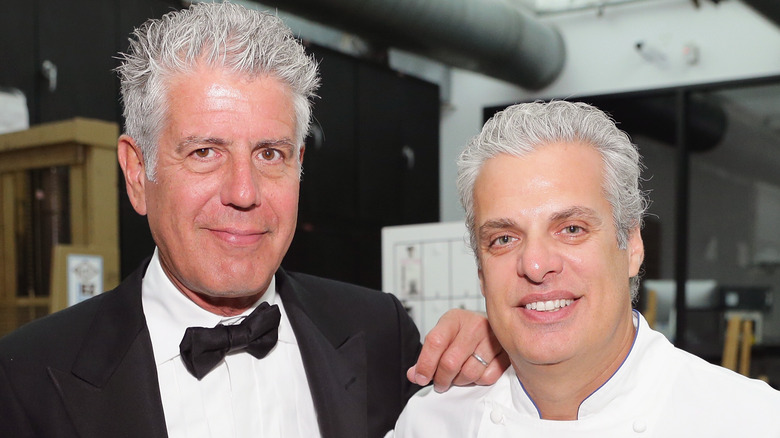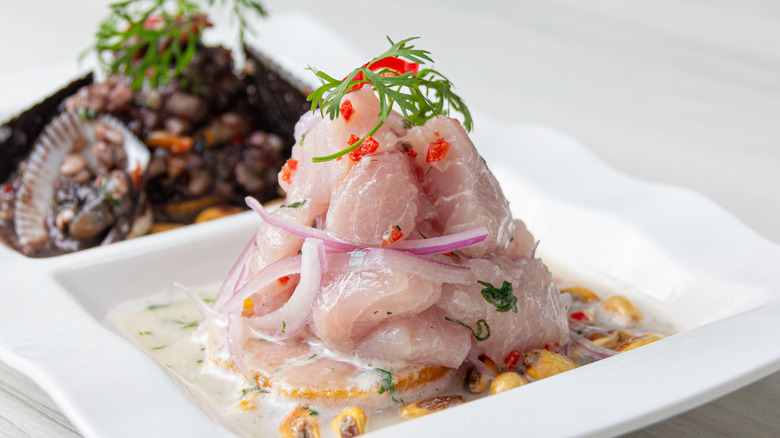Anthony Bourdain & Eric Ripert Agreed On The Key To Great Ceviche
Audacious and legendary in his own time, Anthony Bourdain brought his own unique personality to food and travel. Never afraid to go off the beaten path, into the jungle, down the river, or discuss controversial topics, Bourdain's unpretentious, extremely wry insight into the world of food is something millions of fans will cherish forever. In his last, arguably best, series, "Parts Unknown" on CNN, Bourdain frequently found himself traveling with friends from the world of food and film. One of his most frequent travel partners was his dear friend of over 20 years, award-winning chef Eric Ripert.
Together, they explored Sichuan, Marseille, and the French Alps. But first, they hit Peru. The country is an ancient nation known for its stunning landscapes, preserved historical cities, and ceviche. This beautiful combination of raw fish and citrus is so important to the people of Peru, that it has been declared part of the country's national heritage. However, as with anything else, there is a right and wrong way to make ceviche. For the famous-for-bickering Bourdain and Ripert, they could both agree that one of the keys to a great ceviche is the size of the fish cuts.
Thicker cuts for great ceviche
Ceviche can be made with practically any type of fish, but the thing that makes it a ceviche is the citrus that's used. While Bourdain and Ripert were in Peru's capital Lima for "Parts Unknown," they discussed some of the elements that make a great dish. First and foremost, all of the ingredients for the ceviche must be of the freshest quality that includes fish, herbs, vegetables, and spices. And while this suggestion may seem obvious, the pair also said the size of the cut on the fish is just as vital.
The cuts of fish need to be on the thicker side in order to stand up to the flavors of spices and the acidity of the citrus being used. The larger, thicker cuts also provide more surface area for the citrus to work on. The citrus works on the fish using a process called denaturation. Essentially, the chemical composition of the fish is changed, imparting flavor, while simultaneously turning the fish opaque.
Thicker slices, as opposed to the smaller, diced pieces, sometimes used to make ceviche, are able to react better to the citrus without losing too much of their pristine fish flavor. Pieces should be around 1/4 inch or slightly larger in order for them to be large enough to withstand the aforementioned citrus, but also small enough to remain bite-sized. If you're looking to try your hand at the Bourdain and Ripert-approved dish, try our classic ceviche recipe that features skinless snapper, lime juice, and jalapeño peppers.

